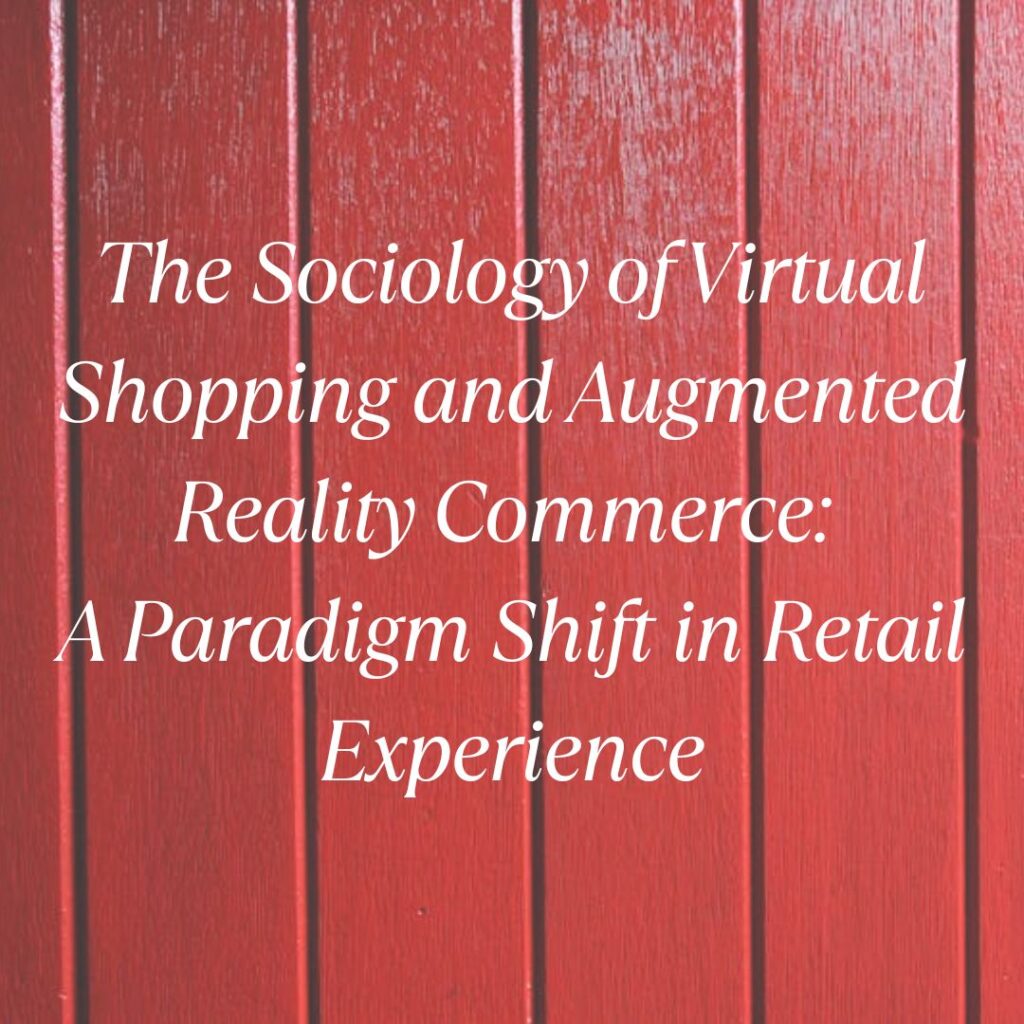In the realm of retail, where the tangible and physical have long dictated consumer behavior, a new wave of technology is reshaping how we shop. Enter virtual shopping and augmented reality (AR) commerce — two interwoven concepts that are not just changing the way products are sold, but also how consumers perceive and interact with brands in the digital age.
Understanding Virtual Shopping
Virtual shopping, often synonymous with virtual reality (VR) shopping, transports consumers into immersive digital environments where they can browse and purchase products. Imagine putting on a VR headset and finding yourself in a virtual store where you can walk down aisles, pick up items, and even interact with virtual sales assistants. This concept isn’t science fiction anymore; it’s rapidly becoming a reality.
One of the pioneers in this field is IKEA, the Swedish furniture giant. Their IKEA Place app utilizes augmented reality to allow customers to place virtual furniture in their homes using their smartphones. This not only enhances the shopping experience by providing a realistic preview but also reduces the likelihood of returns, as customers can see how items fit in their space before purchasing.
Augmented Reality Commerce: Blurring the Lines Between Virtual and Real
Augmented reality (AR) takes a slightly different approach by overlaying digital information onto the physical world. From trying on virtual clothes through a mobile app to seeing how a new pair of sneakers would look on your feet before buying them, AR bridges the gap between online shopping and the tactile experience of trying things on in-store.
Snapchat has been at the forefront of integrating AR into commerce through their lenses. For example, brands like Gucci and Nike have used Snapchat’s AR lenses to allow users to virtually try on their products. This not only drives engagement but also enhances brand visibility and customer interaction in a way that traditional advertising cannot match.
The Sociological Impact: Redefining Consumer Behavior
Beyond the technological advancements, the sociology behind virtual shopping and AR commerce is equally fascinating. These innovations are not just about convenience or novelty; they fundamentally alter how consumers relate to brands and make purchasing decisions.
- Personalization and Identity: Virtual shopping and AR commerce allow for unprecedented levels of personalization. From customizing products to fit individual preferences to curating shopping experiences tailored to specific demographics, these technologies cater to the desire for unique and personalized consumer journeys.
- Social Interaction and Community: Shopping has always been a social activity, whether it’s meeting friends at the mall or discussing purchases with family. Virtual shopping and AR commerce reimagine social interaction by integrating social features directly into the shopping experience. For example, platforms like Facebook Shops enable users to browse and buy products while interacting with friends and influencers, mimicking the social dynamics of real-world shopping.
- Accessibility and Inclusivity: These technologies also address issues of accessibility and inclusivity in retail. Virtual shopping and AR commerce can empower individuals with disabilities by providing a more accessible shopping experience. Moreover, they open up new avenues for brands to engage with diverse global audiences, transcending geographical and cultural barriers.
The Future Outlook: Where Do We Go From Here?
As we look to the future, the trajectory of virtual shopping and AR commerce appears boundless. Advancements in artificial intelligence (AI) and machine learning promise even more personalized shopping experiences, where algorithms anticipate consumer preferences and behaviors in real time.
Moreover, the COVID-19 pandemic has accelerated the adoption of these technologies. With social distancing measures in place, retailers turned to virtual shopping and AR commerce to bridge the gap between physical stores and online platforms. This shift underscored the resilience and adaptability of these technologies in a rapidly changing retail landscape.
Conclusion: Embracing the Evolution of Retail
In conclusion, the sociology of virtual shopping and augmented reality commerce heralds a new era in retail—one where the boundaries between the physical and digital worlds blur, and consumer experiences are redefined. As consumers increasingly seek convenience, personalization, and immersive engagement, businesses must embrace these technologies to stay relevant and competitive in the market.
From enhancing user experiences to fostering social interaction and inclusivity, virtual shopping and AR commerce offer transformative opportunities for brands to connect with their audiences in meaningful ways. As we navigate this exciting terrain, one thing is certain: the future of retail is here, and it’s virtual.
So, strap on your VR headset or launch that AR app on your smartphone—welcome to the future of shopping, where innovation meets consumer culture in ways we’ve only begun to explore.







